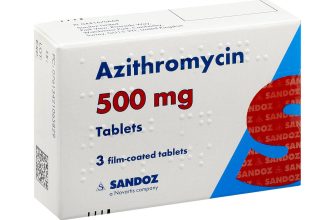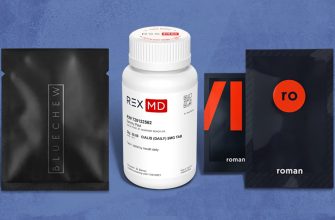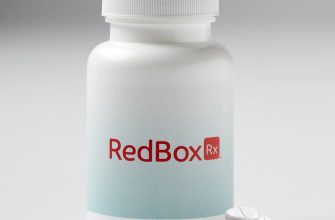Prednisone isn’t a first-line treatment for bronchitis; doctors usually prescribe it only for severe cases or when other treatments haven’t worked. It helps reduce inflammation, easing symptoms like coughing and shortness of breath.
Expect your doctor to consider factors like the severity of your bronchitis, your overall health, and any other medications you’re taking before prescribing prednisone. They’ll carefully weigh the benefits against potential side effects. This medication isn’t suitable for everyone, so open communication with your healthcare provider is paramount.
Common side effects include increased appetite, weight gain, mood changes, and difficulty sleeping. Serious side effects are less common but require immediate medical attention. These might involve increased blood sugar, increased risk of infection, or stomach upset. Always inform your doctor about all your medications and health conditions before starting prednisone.
Remember, prednisone treats symptoms, not the underlying infection. Your doctor will likely prescribe additional treatments to address the root cause of your bronchitis, such as antibiotics for bacterial infections or treatments to manage viral infections. Following their prescribed treatment plan is key to a full recovery.
- Prednisone to Treat Bronchitis: A Detailed Guide
- When Prednisone is Prescribed
- Understanding Prednisone Treatment
- Potential Side Effects
- Important Considerations
- Alternative Treatments
- Conclusion
- What is Bronchitis and When is Prednisone Considered?
- How Prednisone Works to Reduce Bronchitis Symptoms
- Targeting the Inflammatory Response
- Additional Effects of Prednisone
- Dosage and Administration of Prednisone for Bronchitis
- Typical Dosage Regimens
- Important Considerations
- Long-Term Use
- Potential Side Effects of Prednisone for Bronchitis
- Prednisone vs. Other Bronchitis Treatments: A Comparison
- Antibiotics
- Bronchodilators
- Cough Suppressants
- Over-the-Counter Remedies
- Choosing the Right Treatment
- Precautions and Contraindications for Prednisone Use
- Monitoring Progress and Tapering Off Prednisone
- Understanding Prednisone Tapering
- When to Seek Immediate Medical Attention While on Prednisone
Prednisone to Treat Bronchitis: A Detailed Guide
Prednisone, a corticosteroid, can significantly reduce inflammation in the airways, offering relief from bronchitis symptoms. However, it’s not a first-line treatment and doctors typically prescribe it only for severe cases.
When Prednisone is Prescribed
- Severe bronchitis with significant airway obstruction.
- Cases unresponsive to other treatments like bronchodilators.
- Individuals with underlying conditions that worsen bronchitis.
Your doctor will carefully assess your condition to determine if Prednisone is appropriate. They will consider your medical history, the severity of your symptoms, and potential side effects.
Understanding Prednisone Treatment
Prednisone comes in various forms, including oral tablets. Dosage and treatment duration are tailored to individual needs, typically lasting a few days to a couple of weeks. Always follow your doctor’s prescribed regimen precisely.
Potential Side Effects
- Increased blood sugar levels.
- Mood changes, including irritability or anxiety.
- Increased appetite and weight gain.
- Fluid retention.
- High blood pressure.
Inform your doctor about any side effects you experience. They might adjust your dosage or recommend strategies to manage these effects. Sudden cessation of Prednisone can cause withdrawal symptoms; always taper off the medication as instructed by your physician.
Important Considerations
- Prednisone doesn’t treat the underlying infection causing bronchitis; antibiotics might be necessary alongside Prednisone.
- Prednisone can weaken your immune system, making you more susceptible to infections.
- Discuss any other medications you’re taking with your doctor before starting Prednisone, as interactions might occur.
- Regular monitoring of blood pressure, blood sugar, and other vital signs may be required while on Prednisone.
Alternative Treatments
Remember, Prednisone is a powerful medication. Your doctor might recommend other treatments first, such as bronchodilators, expectorants, or rest. These are often sufficient to manage bronchitis symptoms effectively.
Conclusion
Prednisone can provide significant relief for severe bronchitis, but it’s crucial to use it under the guidance of a healthcare professional. Discuss your options thoroughly with your doctor to make informed decisions about your treatment plan.
What is Bronchitis and When is Prednisone Considered?
Bronchitis is an inflammation of the bronchial tubes, the airways that carry air to your lungs. It’s often caused by viral infections, but can also result from bacterial infections or irritants like cigarette smoke. Symptoms include a cough, often producing mucus, chest discomfort, and sometimes shortness of breath.
Prednisone, a corticosteroid, isn’t a first-line treatment for most bronchitis cases. Doctors typically recommend rest, fluids, and over-the-counter medications for symptom relief. However, Prednisone may be considered in specific situations.
Prednisone might be prescribed if:
- You have acute bronchitis with severe symptoms, such as significant shortness of breath or wheezing.
- You have chronic bronchitis exacerbations, meaning a worsening of your underlying condition.
- Other treatments have proven ineffective.
- You have asthma and bronchitis, and the combination causes a severe reaction.
Important Note: Prednisone is a powerful medication with potential side effects. Its use should be carefully considered and managed by a physician. They will weigh the benefits against the risks, tailoring treatment to your individual needs and health history.
Always consult your doctor for diagnosis and treatment of bronchitis. Self-treating can be harmful. They can assess your specific situation and determine the best course of action for you.
How Prednisone Works to Reduce Bronchitis Symptoms
Prednisone, a corticosteroid, combats bronchitis by powerfully reducing inflammation in your airways. This significantly eases the swelling and narrowing of your bronchial tubes, leading to immediate relief from coughing and shortness of breath.
Targeting the Inflammatory Response
Bronchitis involves inflammation caused by your immune system’s response to infection. Prednisone directly affects this response. It suppresses the activity of immune cells that contribute to inflammation, such as white blood cells. This decrease in immune cell activity lessens the swelling and mucus production characteristic of bronchitis.
Additional Effects of Prednisone
Beyond inflammation reduction, Prednisone also acts as a bronchodilator, meaning it helps relax and widen your airways. This further improves breathing and reduces wheezing. The medication also helps reduce mucus production, making it easier to clear your airways.
Dosage and Administration of Prednisone for Bronchitis
Prednisone dosage for bronchitis depends on the severity of your symptoms and your overall health. A doctor will determine the appropriate dose and duration of treatment. Self-medicating with prednisone is dangerous and should be avoided.
Typical Dosage Regimens
Commonly, doctors prescribe a short course of prednisone, typically lasting 5-10 days. The starting dose might be relatively high, then gradually reduced each day (tapered) to minimize side effects. However, treatment duration and tapering schedule vary greatly depending on the individual. Your doctor will provide specific instructions.
- Example: A typical regimen might start with 40mg daily, reducing by 10mg every other day until the medication is stopped.
- Another Example: Some patients might receive lower doses, such as 20mg daily, depending on their needs.
Oral prednisone is usually administered once or twice daily with food to reduce stomach upset. Always follow your doctor’s instructions carefully, including the prescribed dosage and the frequency of administration.
Important Considerations
- Never change your dosage without consulting your doctor. Abruptly stopping prednisone can lead to serious withdrawal symptoms.
- Report any side effects to your doctor immediately. Common side effects include increased appetite, weight gain, insomnia, mood changes and increased blood sugar.
- Inform your doctor about all medications you’re taking, including over-the-counter drugs and herbal supplements, to avoid potential interactions.
Long-Term Use
Prednisone is not meant for long-term use due to potential adverse effects. Long-term use requires careful monitoring by a healthcare professional. Your doctor will assess the risks and benefits before prescribing prolonged treatment.
- Regular blood tests might be required to check for potential complications.
- Lifestyle modifications such as diet and exercise are likely to be recommended alongside medication.
Potential Side Effects of Prednisone for Bronchitis
Prednisone, while effective, can cause side effects. Common ones include increased appetite leading to weight gain, insomnia, mood changes like irritability or anxiety, and increased blood sugar. You might also experience fluid retention, resulting in swelling in your face, legs, or ankles.
Less common but more serious side effects warrant immediate medical attention. These include increased risk of infections, thinning of the bones (osteoporosis), and elevated blood pressure. Stomach upset, such as heartburn or ulcers, is another possibility.
Long-term prednisone use carries a greater risk of these side effects. Your doctor will carefully monitor your treatment and adjust dosage as needed to minimize risks. Always report any new or worsening symptoms to your healthcare provider immediately.
Specific side effects vary from person to person. Open communication with your doctor is vital for managing your treatment effectively and addressing any concerns.
Remember to follow your doctor’s instructions precisely regarding dosage and duration of treatment. This helps reduce the chance of experiencing side effects.
Prednisone vs. Other Bronchitis Treatments: A Comparison
Prednisone, a corticosteroid, reduces inflammation quickly, making it beneficial for severe bronchitis cases causing significant breathing difficulties. However, it’s not a first-line treatment for most bronchitis cases.
Antibiotics
Antibiotics treat bacterial bronchitis, but are ineffective against viral bronchitis (the most common type). A doctor determines if bacteria cause your bronchitis through testing. Antibiotics carry risks like antibiotic-resistant bacteria and digestive upset, so they should only be used when necessary.
Bronchodilators
Inhalers containing bronchodilators like albuterol relax airway muscles, relieving shortness of breath. These are often prescribed for both acute and chronic bronchitis to manage symptoms, unlike Prednisone’s focus on inflammation.
Cough Suppressants
Cough suppressants like dextromethorphan help manage a persistent, bothersome cough. These are symptomatic treatments; they don’t address the underlying cause of bronchitis. Doctors often recommend using these cautiously, as a productive cough aids in clearing mucus.
Over-the-Counter Remedies
Over-the-counter medications like ibuprofen or acetaminophen manage fever and pain. Plenty of rest and fluids remain crucial for recovery regardless of the treatment path.
Choosing the Right Treatment
Your doctor considers the severity of your bronchitis, your medical history, and the likely cause (viral or bacterial) when choosing the best treatment. Prednisone offers rapid inflammation reduction, but its use is usually limited to severe cases due to potential side effects. Other treatments address specific symptoms or underlying causes, offering a more tailored approach.
Precautions and Contraindications for Prednisone Use
Always inform your doctor about all medications you are taking, including over-the-counter drugs and supplements, before starting Prednisone. This helps avoid potentially harmful drug interactions.
Prednisone can increase blood sugar levels, so monitor your blood glucose regularly if you have diabetes. Adjust your diabetes medication as needed, following your doctor’s guidance.
Be aware that Prednisone can weaken your immune system, increasing your susceptibility to infections. Practice good hygiene and avoid contact with sick individuals.
Report any signs of infection, such as fever, chills, or persistent cough, to your doctor immediately. Prompt treatment is vital in this situation.
Prednisone can elevate blood pressure. Regular blood pressure monitoring is recommended, especially if you have hypertension.
This medication can cause fluid retention. Observe for swelling in your ankles, feet, or legs. Contact your doctor if you notice significant swelling.
Be mindful of potential mood changes. Prednisone can cause irritability, anxiety, or depression in some individuals. Report any unusual changes in your mood to your healthcare provider.
Long-term use of Prednisone can lead to bone thinning (osteoporosis). Discuss bone density testing and preventative measures with your doctor, particularly if you are at increased risk.
| Contraindication | Explanation |
|---|---|
| Systemic fungal infections | Prednisone can worsen these infections. |
| Uncontrolled hypertension | Prednisone can further elevate blood pressure. |
| Active tuberculosis | Prednisone can suppress the immune response to tuberculosis. |
| Live virus vaccines | Avoid receiving live virus vaccines while on Prednisone. |
Consult your doctor about any concerns or side effects. They can adjust your dosage or suggest alternative treatments if necessary. Your doctor will create a treatment plan specific to your needs.
Monitoring Progress and Tapering Off Prednisone
Regularly monitor your symptoms. Note any improvements in cough, shortness of breath, and chest tightness. Report significant changes or lack of improvement to your doctor immediately. Expect your symptoms to lessen gradually as your body heals.
Understanding Prednisone Tapering
Your doctor will create a specific tapering schedule, gradually reducing your Prednisone dosage over several weeks or months. This prevents sudden withdrawal symptoms like fatigue, muscle weakness, or joint pain. Follow this schedule precisely. Never adjust your dosage without consulting your physician. Missed doses can disrupt the tapering process, potentially causing relapses or exacerbating existing symptoms. Carefully record your dosage and any side effects in a journal to easily share information with your doctor.
Expect potential side effects during the tapering process, but they usually subside as the dosage decreases. These might include mood changes, insomnia, or increased appetite. Manage these effects with healthy lifestyle choices such as balanced meals, regular exercise, and adequate sleep. Contact your doctor if these symptoms are severe or persistent.
Once your Prednisone course ends, continue to monitor your symptoms. If bronchitis returns, promptly contact your doctor for further evaluation and treatment. Regular follow-up appointments are critical to ensure your complete recovery and to manage any lingering effects. Prioritize open communication with your healthcare provider throughout the entire process.
When to Seek Immediate Medical Attention While on Prednisone
Contact your doctor or seek immediate medical care if you experience any of the following:
Severe allergic reactions: This includes hives, swelling of your face, lips, tongue, or throat (angioedema), difficulty breathing, or a rapid heartbeat. Act quickly; these symptoms can be life-threatening.
Increased blood sugar: Monitor your blood sugar regularly, especially if you have diabetes. Seek medical attention for persistently high levels.
Severe stomach pain or vomiting: These symptoms may indicate a serious problem like a stomach ulcer or perforation. Immediate medical evaluation is necessary.
Signs of infection: Prednisone weakens your immune system. Report any fever, chills, persistent cough, or other signs of infection immediately.
Muscle weakness or severe pain: While some muscle weakness is possible, severe pain or weakness requiring assistance warrants medical attention.
Changes in vision: Blurred vision, double vision, or other vision changes should be reported to your physician without delay.
Severe headaches or dizziness: These could signal increased intracranial pressure, a serious condition requiring prompt medical intervention.
Significant mood changes: Prednisone can affect mood. Report severe anxiety, depression, or unusual behavior changes.
Any concerns about your medication: Don’t hesitate to contact your doctor if you have any questions or concerns about Prednisone or your treatment. Your health is important.








